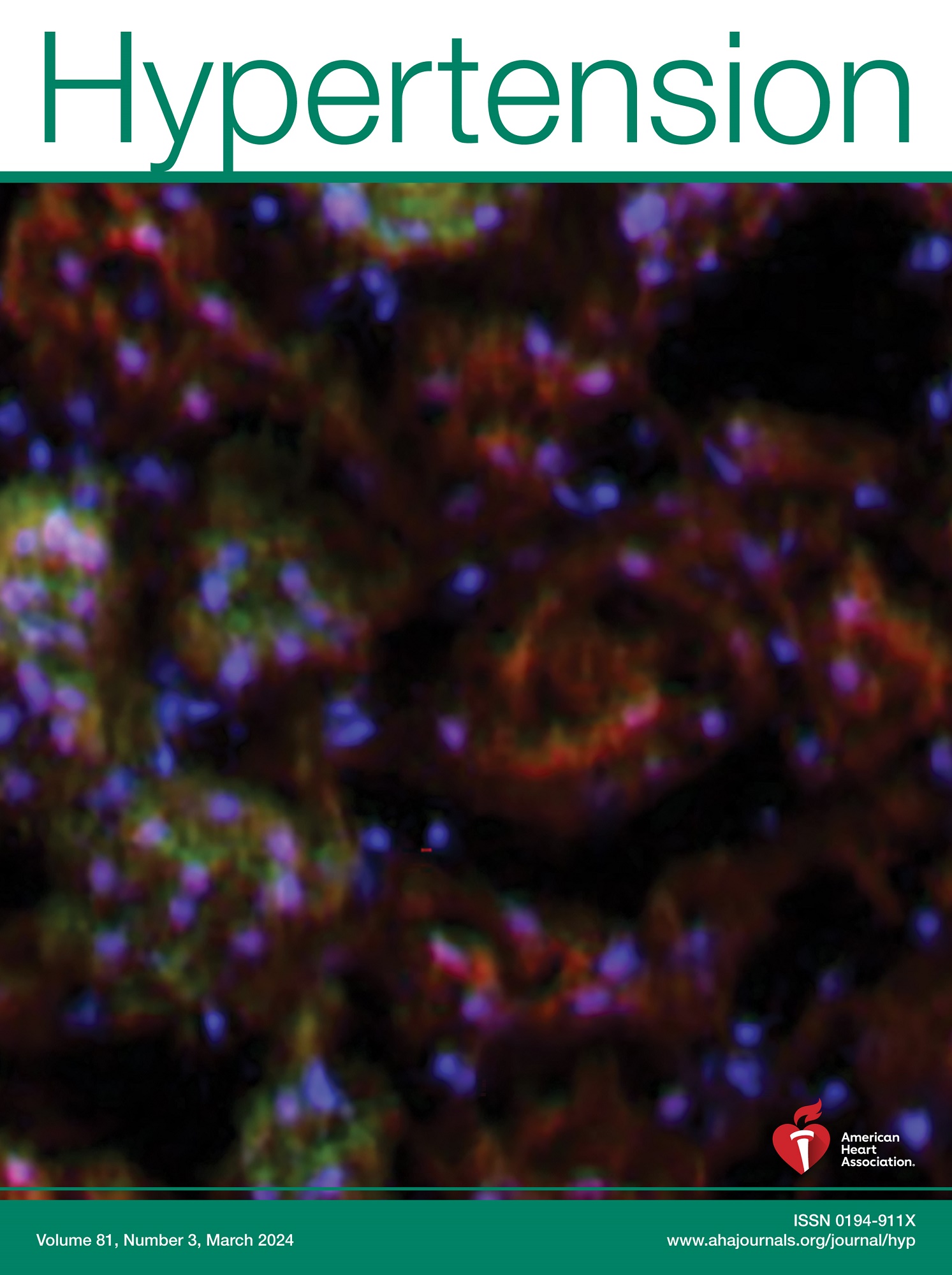Benefit and Harm of Intensive Blood Pressure Control by Cardiovascular Risk.
IF 8.2
1区 医学
Q1 PERIPHERAL VASCULAR DISEASE
引用次数: 0
Abstract
BACKGROUND Current guidelines for blood pressure treatment are stratified by cardiovascular disease (CVD) risk levels. However, the impact of CVD risk on the benefits and harms of intensive blood pressure control remains unknown. This study aims to evaluate the cardiovascular benefits and treatment-related adverse events associated with intensive blood pressure control across different CVD risk levels. METHODS From the STEP trial (Strategy of Blood Pressure Intervention in Older Hypertensive Patients), 8262 patients were stratified by tertiles of baseline 10-year CVD risk. Benefit and harm were determined as a reduction of primary outcomes and an increase of adverse events, respectively. Cox proportional hazard models were used to examine the association between CVD risk and outcome events in each tertile. The Poisson regression model was used to predict the benefits and harms. RESULTS During a median follow-up of 3.32 years, 333 primary outcomes and 611 adverse events occurred. Within each risk tertile, there were lower rates of the primary outcome in the intensive treatment group (overall hazard ratio, 0.76 [95% CI, 0.61-0.94]), and the hazard ratio for adverse events was 1.1 (95% CI, 0.94-1.28). Patients with higher CVD risk had higher absolute risk reduction of the primary outcome and absolute risk increase of adverse events. The predicted benefit-to-harm ratio differed significantly across each CVD risk tertile but favored intensive control overall. CONCLUSIONS Higher CVD risk was associated with increased benefit and harm from intensive blood pressure control. Although benefit and harm profiles varied across CVD risk levels, the overall benefit was greater than harm in all risk tertiles.强化血压控制对心血管风险的利与弊。
背景:目前的血压治疗指南是根据心血管疾病(CVD)风险水平分层的。然而,心血管疾病风险对强化血压控制的利弊的影响尚不清楚。本研究旨在评估不同心血管疾病风险水平下强化血压控制相关的心血管益处和治疗相关不良事件。方法来自STEP试验(老年高血压患者血压干预策略),8262例患者按基线10年心血管疾病风险的分位数进行分层。益处和危害分别被确定为主要结局的减少和不良事件的增加。使用Cox比例风险模型来检查每个分位数中心血管疾病风险与结局事件之间的关系。采用泊松回归模型预测利弊。结果在中位3.32年的随访期间,发生了333个主要结局和611个不良事件。在每个风险分类中,强化治疗组的主要转归发生率较低(总风险比为0.76 [95% CI, 0.61-0.94]),不良事件的风险比为1.1 (95% CI, 0.94-1.28)。心血管疾病风险较高的患者主要结局的绝对风险降低和不良事件的绝对风险增加较高。预测的获益-危害比在每个心血管疾病风险指标之间存在显著差异,但总体上倾向于强化控制。结论强化血压控制与心血管疾病风险升高相关。尽管益处和危害在心血管疾病风险水平上有所不同,但在所有风险类别中,总体益处大于危害。
本文章由计算机程序翻译,如有差异,请以英文原文为准。
求助全文
约1分钟内获得全文
求助全文
来源期刊

Hypertension
医学-外周血管病
CiteScore
15.90
自引率
4.80%
发文量
1006
审稿时长
1 months
期刊介绍:
Hypertension presents top-tier articles on high blood pressure in each monthly release. These articles delve into basic science, clinical treatment, and prevention of hypertension and associated cardiovascular, metabolic, and renal conditions. Renowned for their lasting significance, these papers contribute to advancing our understanding and management of hypertension-related issues.
 求助内容:
求助内容: 应助结果提醒方式:
应助结果提醒方式:


